Edible landscaping, like any form of landscaping, requires investment and maintenance. However, edible landscapes give back where conventional landscapes do not.
Having been working in Victoria, BC for the last 8 years designing, installing and maintaining edible landscapes, including our own home gardens, we are often asked, “what’s the return on investment (ROI)?”
The answer is not as straightforward as we might want, but hopefully, we can share some insight with this blog. Because ‘edible landscaping’ straddles the line between conventional landscaping and backyard gardening, it depends on what you compare it to.
If you like quick answers and don’t intend to read on, the executive summary is this: compared to conventional landscaping, the cost-benefit is extremely favorable.
Compared to buying food at current market rates and ignoring your landscape, it depends.
However, if you are wanting to get more out of your landscape and want to begin to localize your food, edible landscaping might be for you.
Let’s explore…
The costs
Because edible landscaping can require trained and experienced designers, installers and maintenance people, at the end of the day, the cost structure is not unlike that of conventional landscapes.
Throughout North America, the average cost of landscaping is around $10-12/square foot or around $13-$35K for an average residential landscape makeover. But don’t take our word for it, check out this exceptional cost guide for various types of landscaping projects: https://www.fixr.com/costs/landscaping. In our experience, they are quite accurate.
Having said that, averages only tell a small part of the story. Much like conventional landscaping, there is a vast spectrum of edible landscape possibilities that range from low-cost, informal and impermanent features to high cost, formal, and permanent features. There are also ways to reduce upfront costs by investing your own time and labor into the project, something we often work with clients to do.
To illustrate this spectrum, here are a couple of examples. Rototilling a lawn to create rows for the seeding of annual vegetables can be done in a day with some rented equipment, a little compost, a sprinkler and a bag of seeds. Meanwhile, installing a multi-layered edible landscape with fruit trees, berry bushes, herbs, ground covers, water features, automatic irrigation, patios, pergolas, and trellises can take weeks. The former can yield a lot in the first year, but left to its own, it will revert to a weedy lawn if not repeated multiple time per year. The latter will be slower to produce but will be set up for decades of high-value harvests, increasing each year.
Neither is right or wrong and there is a time and a place for both. Hybrids are also an option!
For those whose primary decision-making lens is monetary and short-term, I have bad news for you. Within the current economic paradigm, you’re better off shopping at Costco while the global economic system still churns out ‘cheap food’, made possible by subsidized fossil fuels. Or, even if high-quality local organic food is a priority, you might still be better off subscribing to a local farmers’ CSA Program; there are many within the CRD alone. Again, this all depends on your goals for food security and how you want to interact with your yard.
Depending on your level of experience and the degree to which you value your own ‘labor’, the investment of time and money to grow high-quality crops can quickly exceed what a year’s CSA subscription is worth. Having said that, most CSA’s don’t run all winter, whereas a carefully tended edible landscape can deliver year-round food.
The benefits
First off, beyond dollars and cents, there are many hidden benefits (not immediately monetary) to consider with edible landscaping, including:
- the physical and mental health benefits associated with being outdoors, observing and interacting with your landscape
- the skill-building & infrastructure development that positions you well for a low-carbon future where the true cost of food is expressed
- the opportunity to grow and harvest nutrient-rich foods year-round that are simply not available in grocery stores or at farmer’s markets (mulberries, goumi berries, fresh figs, goji berries, lemons, Asian pears, perennial vegetables and so many more!)
- the ecological services that are created by an organic, no-till garden (rainwater infiltration, pollinator & bird habitat, carbon sequestration, soil building, shade)
Where an edible landscape really starts to become a sound, multi-functional investment is when you:
- value the ‘hidden benefits’ listed above
or - plan on renovating your landscape regardless to increase aesthetic and functional benefit
But what about the monetary value of the produce grown? Well, some intensive market gardeners have had sales of up to $80,000 on a half acre. But that’s growing hundreds of pounds of salad greens & micro-greens for restaurants. What about someone who wants to feed their family & friends with a more diverse cropping scheme of fruits, vegetables, and nuts and doesn’t want to farm for profit? What about someone who wants to eat from their yard all year round, which we can do in Victoria!
Our experience has shown that even on a small urban lot (with less than 0.06 acres in production), it is not unreasonable to expect yield equivalents between $3.5-$6K per year.
Here is a partial inventory of plants with their expected annual yield and market value calculated for one of our edible landscapes installed in 2012.

To get these estimates, we’ve taken low-end yield estimates to be conservative (at year 7, beginning of peak production), but high-end prices. That is because the produce grown in these organic landscapes is truly of a grade not achievable in grocery stores. Being in year 5 for some of these landscapes, we can also verify that these estimates are indeed materializing.
On the 0.06 acre edible landscape case study above, we’re growing an amazing diversity of high-value crops, many of which simply cannot be bought from either the industrial or local food system.
We’ve also run these numbers for another 0.16 acre edible landscape we installed 3 years ago and have come up with yield values of around $12,000/year. This does not include value-added potential, just the value of raw herbs, fruit, berries, mushrooms and vegetables at local organic market pricing.
Another interesting note here is that these landscapes are 80% perennial crops, with only 20% annual veggie gardens that need to be replanted each year. That means they are much less maintenance than ‘annual-crop market gardens’. They also spread the yield out more throughout the year than most annual gardens.
The catch?
I myself am a skeptic and like to play devil’s advocate when I can. Perhaps it’s my small ‘c’ conservative prairie roots? Obtaining a $3.5-6K/year yield on that size lot while still having all the formal elements and beauty of a conventional landscape sounds too good to be true, right? Well, its certainly a joy to work in and many of our clients tell us they don’t feel compelled to take holidays away from home like they used to, and would rather spend the time with their family in their own yard.
There remains the issue of valuing the labor of the picking & harvesting. The food needs to get into the kitchens, larders, and bellies the eaters. It simply doesn’t harvest and process itself. For many, this is a delightful, restorative act that better connects them with their food and builds a strong sense of local food culture. For others, this may prove to be ‘too much work’.
Picking and processing fresh food may take time, but it can replace trips to the grocery store and provide unparalleled moments of natural connection. How does this weigh into your cost-benefit analysis?
While we understand the pressures of a busy life, we truly believe that making time to improve the soil and ecological health around us while growing nourishing crops is one of the most important connections we can invest in as individuals, communities and as a civilization.
So is it for you? It depends of course, but we hope to have shed some light on both the monetary & non-monetary costs and benefits of planting & maintaining an edible landscape around your living space.


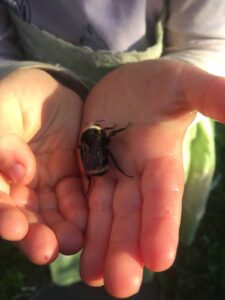

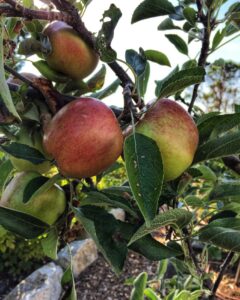
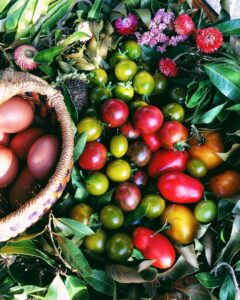
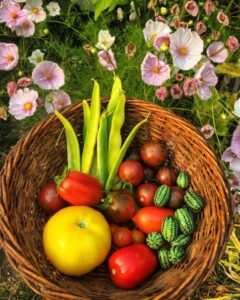
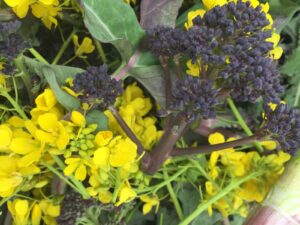
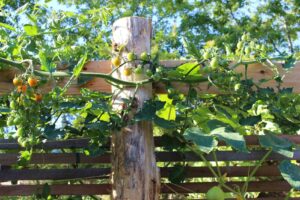
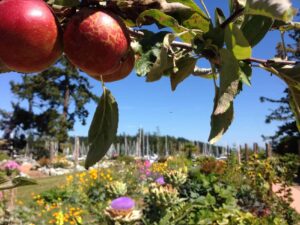


Your blog is amazing it gives so much information and ideas.
Thank you for comparing the costs and benefits of an edible landscape here. I was thinking of investing in an edible landscape, but I wasn’t sure if it would benefit me or not. Your article has made me understand it will benefit me.
I’m sure that everyone is amazed by the yield.
Your site is very informative. Thank you for sharing tips. I will keep an eye on your site for more tips!